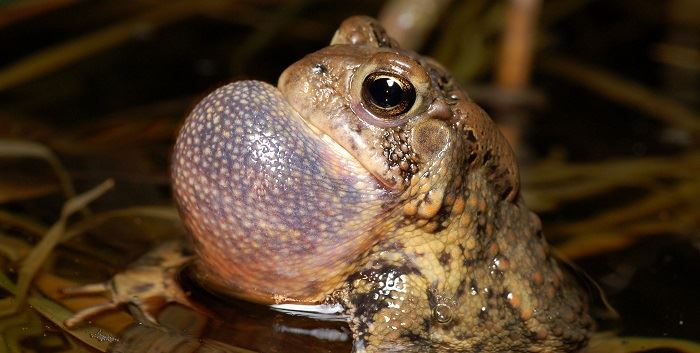The Thrill of the Trill

By Karen Menard
It’s a spring thing -- toads looking for love, warts and all.
Starting with a puff of their throat and a hypnotic serenade, male American toads spend the spring competing for females and establishing breeding territory near semi-permanent ponds. Their melodious trills can be heard ringing through wetland areas as they congregate from April to June.
Mottled in different shades of brown, toads are very well camouflaged and find it easy to hide among leaves, rotting logs and dirt. Their bumpy skin harbors “wart-like” glands that contain defensive chemicals, making them not so palatable to many predators, unless you are a snake or a hawk.
Hognose snakes and red-shouldered hawks found mainly in the Oak Openings region love to eat toads.
In our area, red-shouldered hawks have been found primarily nesting near residences that had large toad populations, breeding in adjacent man-made ponds or nearby floodplains.
Consuming over 1,000 insects a day, a toad’s importance to our ecosystem is clear: They help control insect populations, and they are essential components of the food chain. Toads are beneficial animals to have around our natural areas, as well as our backyards. Just like bats are helpful in controlling flying insect populations in different habitats, toads hop their way around our landscapes eating their fair share of slugs, non-native earthworms, ants, and other bugs.
As you walk by ponds or other wetlands this spring, listen for the sounds of toad music and enjoy the trills.
Did You Know?
Toads drink by absorbing water through an area on their lower abdomen called a “seat patch.”
__
Toad video courtesy Rick Semrau